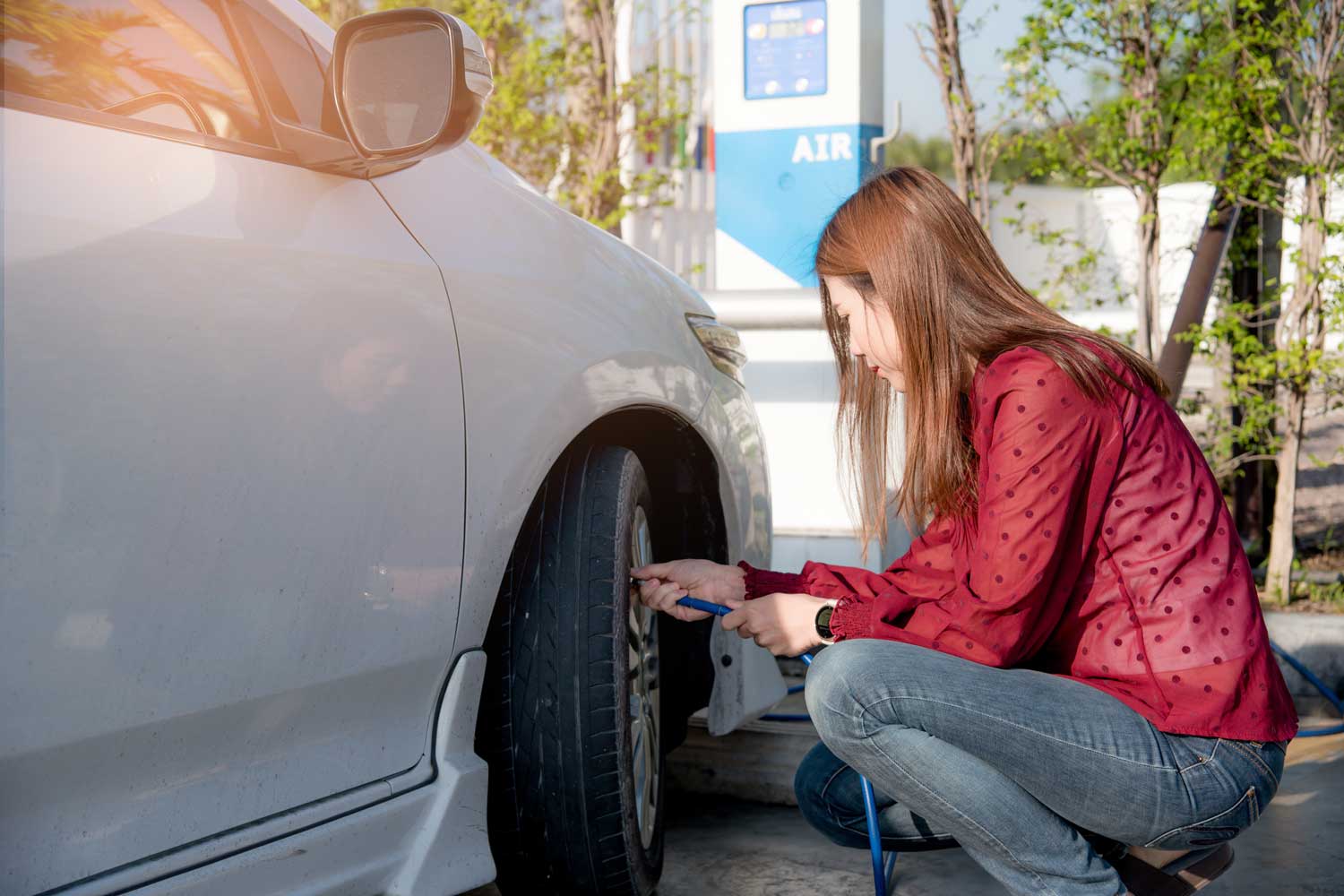Why Tire Pressure Goes Up and Down with Temperature Changes
And why it's a good idea to check your tires when they're cold.
 Shutterstock
Shutterstock
We ask a lot of our tires — they help our cars go, stop, and change direction — but they ask very little in return. That’s not to say that your rubber can be ignored, though. As seasons change and temperatures dip and climb, tire pressures go along for the ride. We’ll explain how the two are connected and how to keep your rubber in mint condition.
The Physics of Tire Pressure
Yes, it’s the laws of physics that dictate how temperature affects tire pressure. Specifically, we’re concerned with the ideal gas law, which describes the interplay between temperature, pressure, and volume. Without going into too much detail, this law tells us that when the volume of a gas is held constant — as air is inside a tire — temperature and pressure are directly proportional to one another. Put another way, when temperature increases, pressure also increases, and when temperature decreases, pressure also decreases.
What does not change, however, is the recommended pressure for your vehicle’s tires. If you’re checking and adjusting tire pressure once a month (as manufacturers suggest you should), this shouldn’t be an issue, as you’ll account for climatic temperature changes little by little. But if you don’t stay on top of it and your car sits out in the cold one night, you may get an alert from the tire pressure monitoring system (TPMS) on startup, which can be a bit concerning. So do your future self a favor and check those pressures regularly. It’s a good idea to carry a tire-pressure gauge in the glovebox for those times when the TPMS sensors go off while you’re away from home.
How Driving Affects Pressure
Ambient temperature isn’t the only source of heat that can affect your tires. As you drive, the friction between the rubber and the pavement (also known as rolling resistance) will warm the tire and thus the air within it, causing an increase in pressure.
This is why you should check and set tire pressures when the rubber is cold, so not right after a drive or when it is subjected to the sun’s rays. First thing in the morning is a good time to set pressures, assuming you weren’t out driving all night and the tires weren’t sun-bathing.
Cold Weather Can Cause Other Tire Issues
One final caution regarding winter weather: When rubber gets cold, it becomes less pliable. As a result, the tire’s bead — the section that rests against the wheel to form a seal — may not conform to the contours of the rim as well, and a big impact like hitting a pothole can cause some air to leak out. This is less of an issue with winter-specific tires, as they’re designed to remain flexible in the cold, but even dedicated rubber is susceptible to hardening at extreme lows. All the more reason to keep tabs on tire pressures year-round.
Written by humans.
Edited by humans.
 David Gluckman
David GluckmanDavid Gluckman has over a decade of experience as a writer and editor for print and digital automotive publications. He can parallel park a school bus, has a spreadsheet listing every vehicle he’s ever tested, and once drove a Lincoln Town Car 63 mph in reverse. When David’s not searching for the perfect used car, you can find him sampling the latest gimmicky foodstuffs that America has to offer.
Related articles
View more related articles